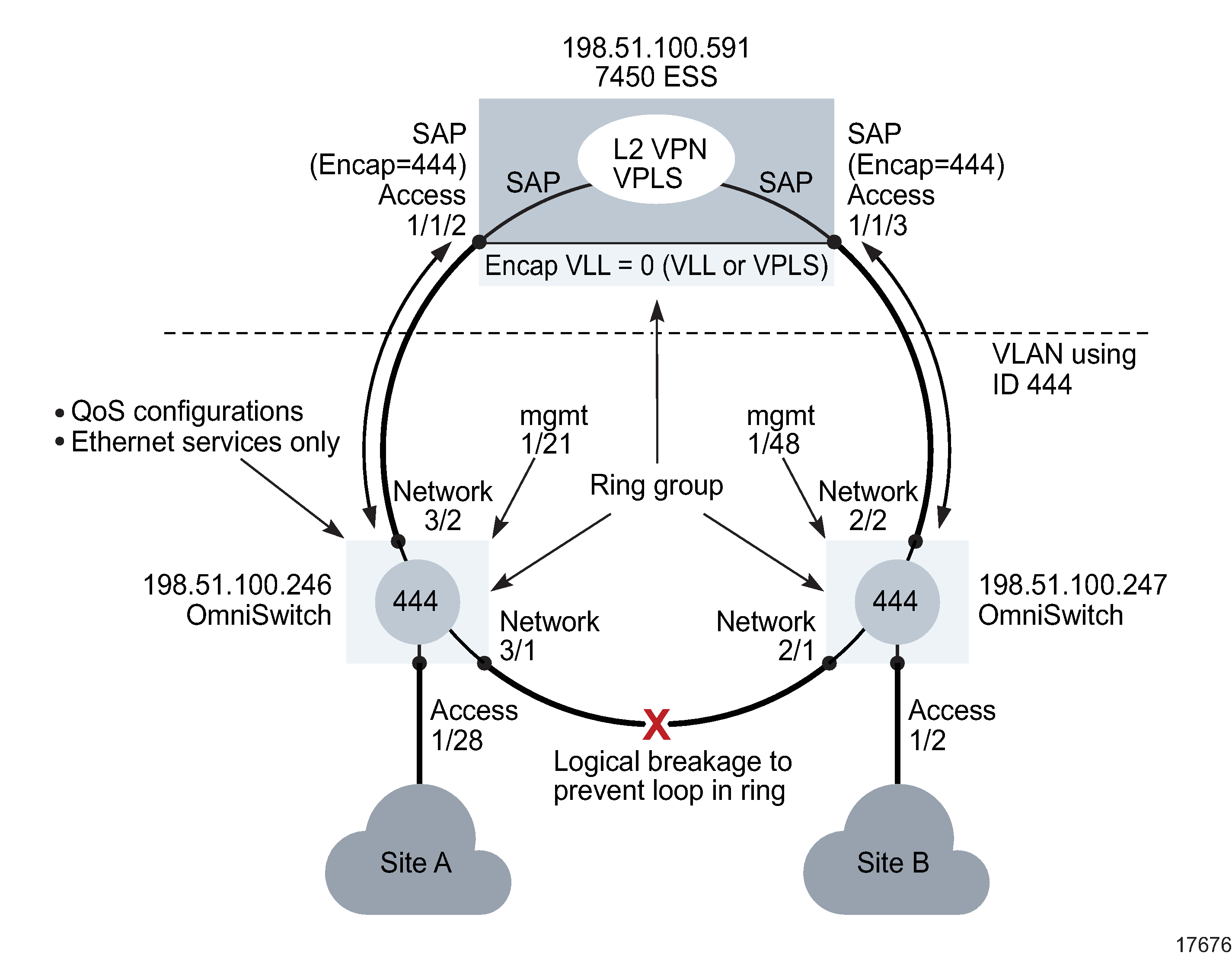Sample L2 VPN VLAN configuration
Overview
The following figure shows a sample L2 VPN VLAN service configuration. Transparent LAN services such as a L2 VPN are used to transport large numbers of customer VLANs while keeping the traffic in each VLAN segregated. The configuration depends on the specific network requirements.
Figure 75-2: Sample L2 VPN VLAN configuration

Pre-configuration tasks
Verify that the following preconfigurations are complete.
- Ensure that the appropriate preconfigurations have been performed on the OmniSwitch devices.
-
Ensure that the VPLS that feeds the ring VLAN service is configured on the 7450 ESSs. The encapsulation of the SAPs that belong to the VPLS on the 7450 ESSs must match the VLAN ID of the ring VLAN.
-
Configure the OmniSwitch ports as access (ports that are part of the VLAN) and network (ports that are used for uplinks), as required, from the navigation tree.
-
Devices that belong to the ring, and the 7450 ESS that the ring connects to, must be added to the ring group.
- Ensure that the appropriate preconfigurations have been performed on the 7450 ESS.
Note: Only Ethernet services are supported on an OmniSwitch L2 VPN VLAN service.
Configuration tasks
The following high-level tasks are required to configure this sample VLAN L2 VPN service:
1 |
Ensure that the required configurations are completed to equipment, including configuring access and network ports, enabling CLI configuration on managed OmniSwitch devices. |
2 |
Configure the required policies, including QoS, scheduling and IGMP filter policies. |
3 |
Distribute configured policies to the devices. The policies are used during the creation of VLAN services. |
4 |
Create VLAN services using a series of configuration forms. Ensure that the VLAN created for the ring group uses ID 444. |
5 |
Associate access interfaces (similar to SAPs) with VLAN services, that are the physical ports to which end users connect. Use the L2 Interfaces tab on the VLAN properties form to associate VLAN services with the ports used by end users. |